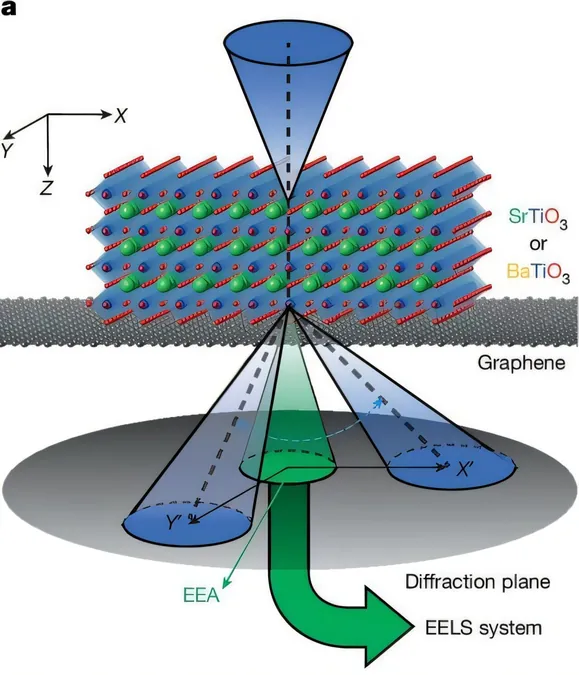
Groundbreaking Method Captures Atomic Vibrations in Stunning Detail
2025-09-19
Author: Wei Ling
In a groundbreaking breakthrough, researchers at the University of California, Irvine, along with an international team, have pioneered a revolutionary electron microscopy technique that showcases the first-ever imaging of atomic vibrations, or phonons, in specific directions.
This remarkable discovery sheds light on vibrational anisotropy, where atoms within crystallized materials oscillate differently based on their direction. This property significantly influences essential characteristics like dielectric, thermal, and superconducting behaviors. Understanding these intricate variations empowers engineers to design materials tailored for cutting-edge applications in electronics, semiconductors, optics, and quantum computing.
Published in the esteemed journal Nature, the research team elucidates their innovative momentum-selective electron energy-loss spectroscopy (EELS) technique, which uncovers the fundamental lattice dynamics of functional materials.
Focusing on strontium titanate and barium titanate—two perovskite oxides with distinct thermoelectric and optical functionalities—the researchers meticulously collected vibrational signals at an atomic level along selected directions. This precision allowed them to observe significant differences in acoustic and optical phonons' anisotropic behavior in both materials.
Co-author Xiaoqing Pan, a distinguished professor at UC Irvine, emphasized the groundbreaking nature of their findings: "The altered anisotropic vibrations yield measurements vastly different from those obtained by assessing entire crystal structures, providing a more nuanced understanding of atomic behavior."
Moreover, Pan highlighted that this innovative technique enables materials scientists to map vibrational anisotropy with unprecedented spatial and energy resolution across diverse materials, transforming how we study atomic interactions.
Senior co-author Ruqian Wu underlined the significance of the findings: "This research correlates closely with theoretical predictions and paves the way for further explorations into vital phonon-related phenomena, including ferroelectric phase transitions and the pivotal roles oxygen sites play in high-temperature superconductors."
The UC Irvine team was joined by esteemed scientists from Uppsala University in Sweden and Nanjing University and Ningbo Institute of Materials Technology and Engineering in China, marking a significant international collaboration in advancing materials science.





 Brasil (PT)
Brasil (PT)
 Canada (EN)
Canada (EN)
 Chile (ES)
Chile (ES)
 Česko (CS)
Česko (CS)
 대한민국 (KO)
대한민국 (KO)
 España (ES)
España (ES)
 France (FR)
France (FR)
 Hong Kong (EN)
Hong Kong (EN)
 Italia (IT)
Italia (IT)
 日本 (JA)
日本 (JA)
 Magyarország (HU)
Magyarország (HU)
 Norge (NO)
Norge (NO)
 Polska (PL)
Polska (PL)
 Schweiz (DE)
Schweiz (DE)
 Singapore (EN)
Singapore (EN)
 Sverige (SV)
Sverige (SV)
 Suomi (FI)
Suomi (FI)
 Türkiye (TR)
Türkiye (TR)
 الإمارات العربية المتحدة (AR)
الإمارات العربية المتحدة (AR)